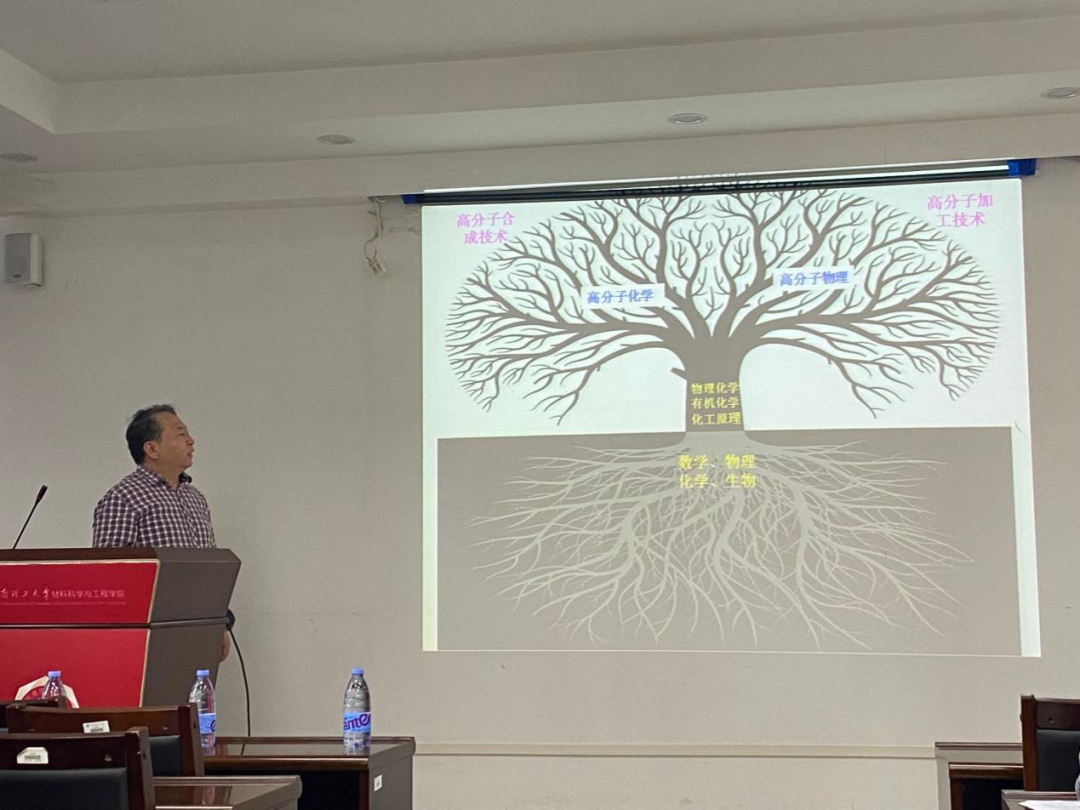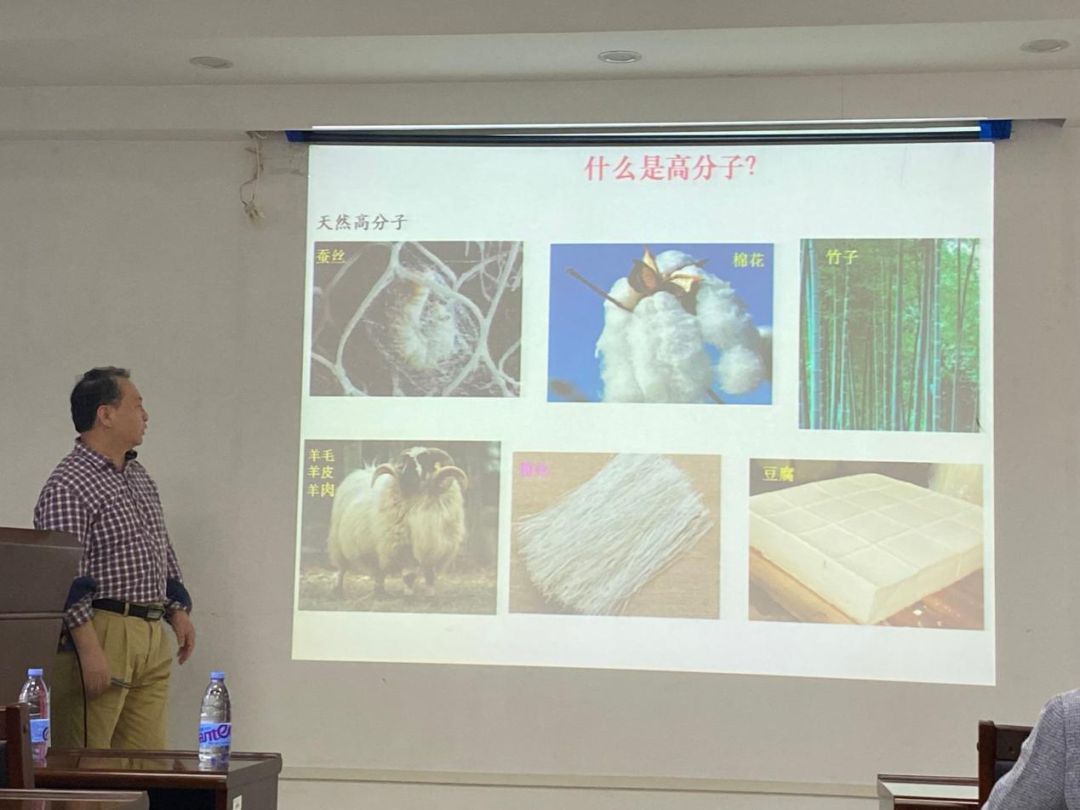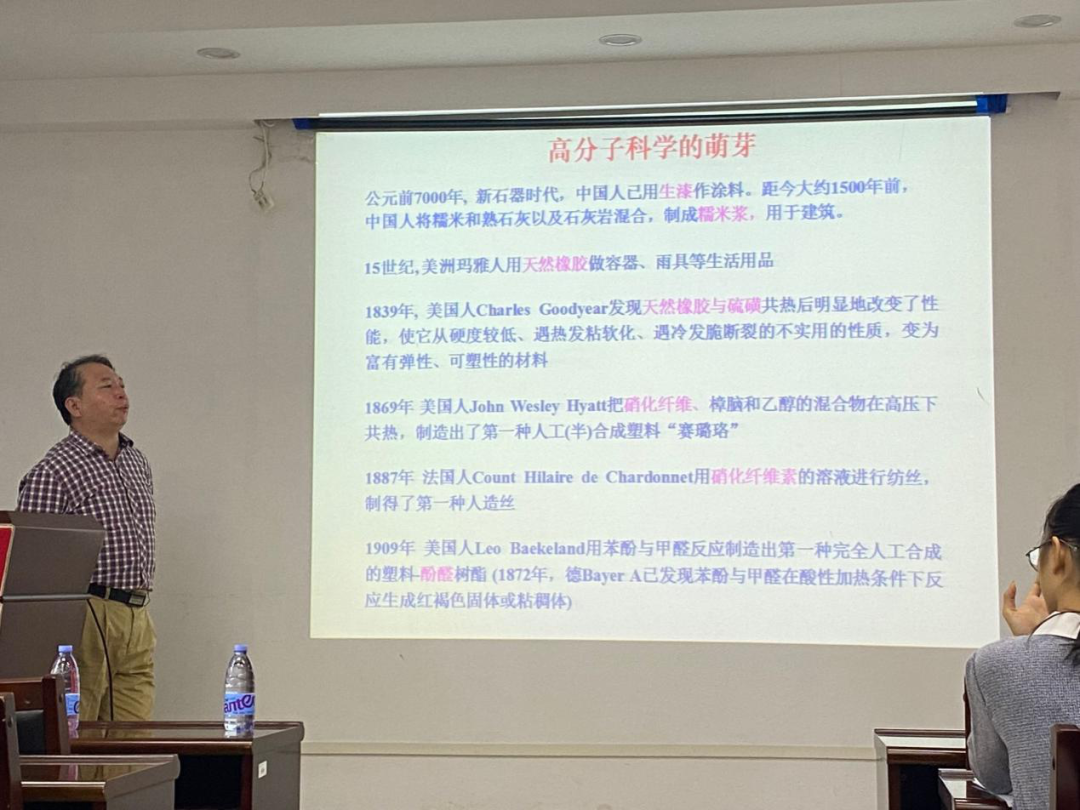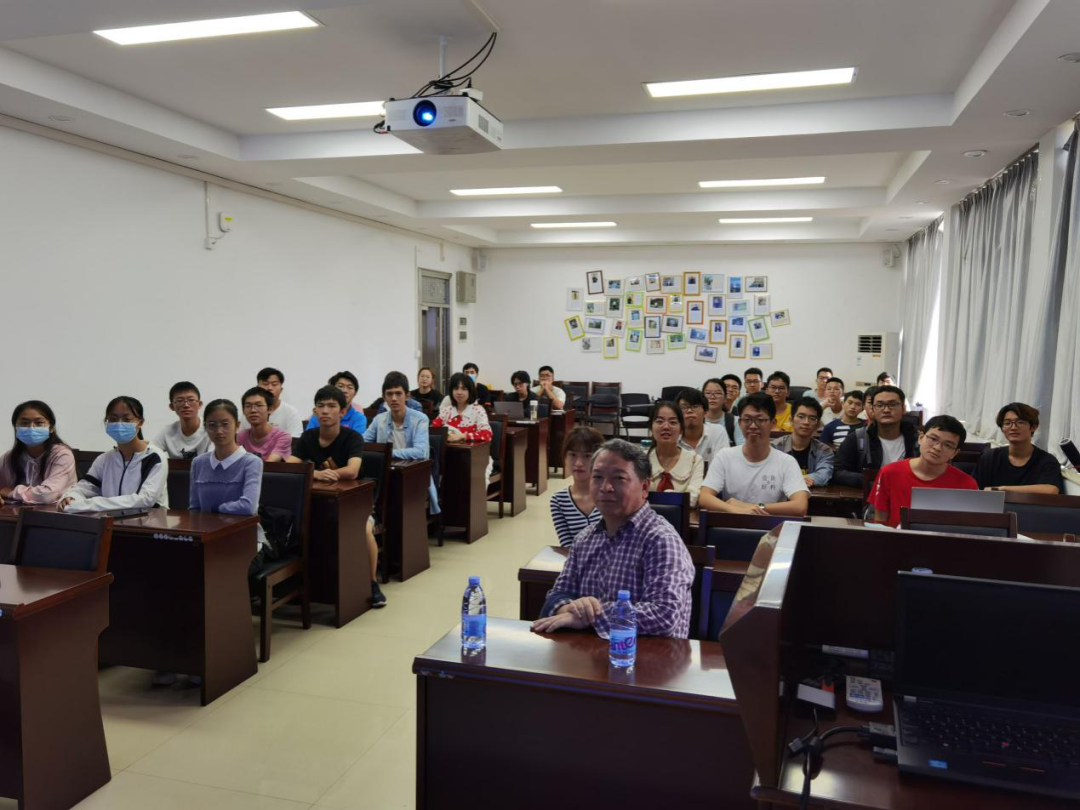On the morning of 14th October, Professor Zhang Guangzhao, gave us a well-informed presentation in concise and vivid language.

First of all, he introduced the basic idea: what is polymer? Polymers are everywhere in our life. The vast majority of substances in nature, silk, cotton, bamboo, mutton and so on are polymers. In our daily life, tofu, vermicelli are also polymers.

Polymer material is composed of polymer. Compared with small molecules, its molecular weight is large, and it has rich chain conformation. Therefore, polymer usually has high elasticity, viscoelasticity, insulation, light weight and other characteristics.
So how did polymer science come about? Teacher Zhang Guangzhao gave us a clear introduction of its history of development. In 7000 BC, the Chinese used raw lacquer as paint, which was the first creation and utilization of polymer. In the 15th century, the Mayans in America used natural rubber to make rain gear and other articles of life. In 1839, which was the good year with historical record, Charles Goodyear co-heated natural rubber with sulfur to obtain elasticity material. In 1869, American John Wesley Hyatt produced the first artificial semi-synthetic plastic -- celluloid. In 1887, The French Count Hilaire de Chardonnet spun yarn with nitrifying fiber solution and produced the first artificial silk. At this point, polymer synthetic materials formally entered the stage of human history, ready for the future life to bring a lot of convenience and development to human life.

The marine biofouling has been a serious problem for a long time. There are a number of machines which are needed to be placed in the ocean. However, their lifetime will be significantly shortened due to the adhesion of the marine organism. In order to get rid of those attachment, the tradition way is to clean by hand with the help of specific robots. However, this method has a fatal drawback that it costs too much. So our professor along with his team aims at a special kind of method called the anti-biofouling coating. It can be painted on the surface which will contact with the seawater such as the bottom of the ship. In their experiments, the surface which is covered by the coating has little attachment while others are full of it. This is a great improvement.
After this lecture, students had a detailed understanding of the concept, development and application of polymer in Marine antifouling. Polymers play a variety of roles in our lives, and there are many problems waiting to be solved.


